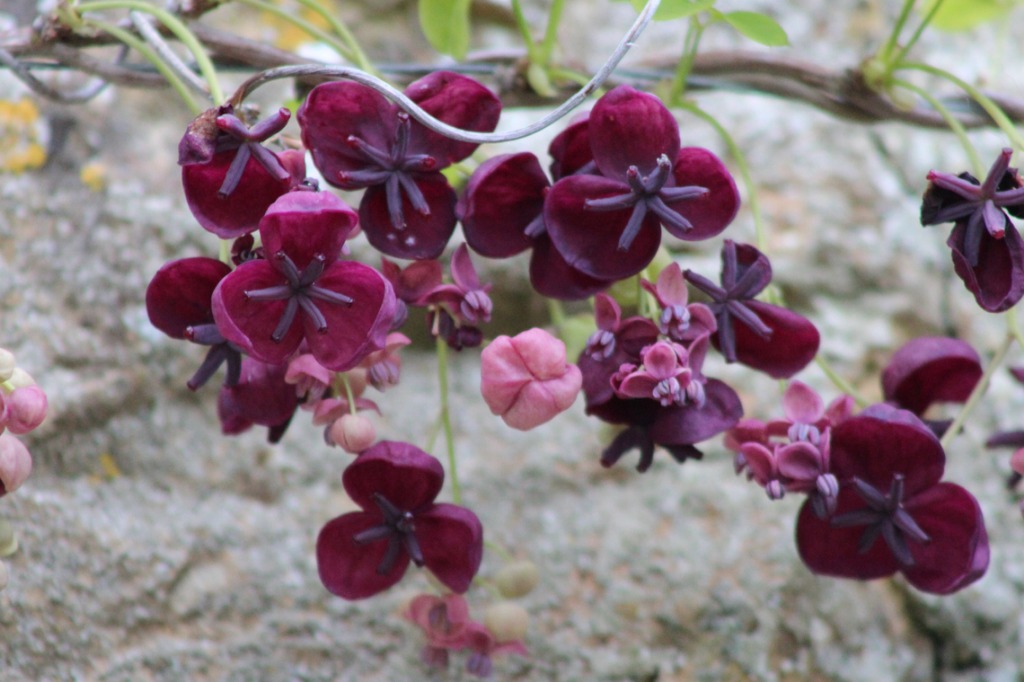Chocolate vine
(Akebia quinata)

Description
Akebia quinata (synonyms: Rajania quinata) commonly known as chocolate vine, five-leaf chocolate vine, or five-leaf akebia, is a shrub that is native to Japan, China and Korea, and invasive in the eastern United States from Georgia to Michigan to Massachusetts. In its native habitat, it is often found on hills, in hedges, on trees, along forest edges and streams, and on mountainous slopes. Akebia quinata is a climbing evergreen shrub that grows to 10 m (30 ft) or more in height and has palmately compound leaves with five elliptic or obovate leaflets that are notched at the tip. The woody stems are greyish-brown with lenticels.The flowers are clustered in racemes and are chocolate-scented, with three or four sepals. The fruits are sausage-shaped pods which contain edible pulp. The gelatinous placentation contains seeds surrounded with white pulp, that has a sweet flavor. The fruit contains a sweet soft pulp resembling a white dragonfruit, eaten primarily in Japan as a seasonal delicacy. The rind, with a slight bitter taste, is used as vegetable, e.g., stuffed with ground meat and deep-fried. The vines are traditionally used for basket-weaving. The stem contains approximately 30% potassium salts thus causing a diuretic action. The fruit is used in Traditional Chinese Medicine to treat urinary tract infections, scanty lactation, and rheumatoid arthritis. Akebia prefers sandy soils with good drainage, and regular watering, though it is drought-resistant. In some areas the plant is an invasive species to be avoided.This species in considered hardy in all of the UK and Europe (down to -15 to -20°C). In the US, it suitable for hardiness zones 4-9. Akebia is a genus of five species of flowering plant, within the family Lardizabalaceae. Akebia quinata and Akebia trifoliata both bear edible fruit, containing a sweet white flesh. Flavor varies greatly in akebias, even within the same species, with some individuals displaying a complex flavor profile resembling a mixture of banana, passionfruit and lychee, with others being mild, or even insipid. Akebia is often mentioned in Japanese literature, where it is evocative of pastoral settings. Although the akebi commonly refers to the five-leafed species, the three-leafed species is used in much the same way for novelty food, medicine, and for vine material. While only a minor food eaten while foraging in the past, akebia is considered a specialty crop today, only available when in season.
Taxonomic tree:







